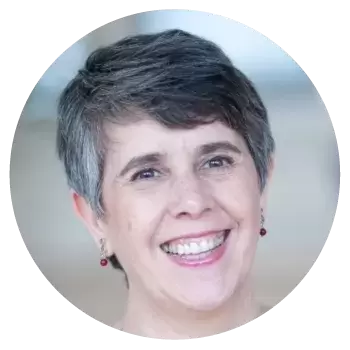Fuensanta graduated in Medicine and Surgery from the University of Cordoba in 1987. She graduated as a Certified Rolfer® in Boulder, Colorado, in 2015, as a Rolf Movement™ Practitioner in 1996 and as a Somatic Experiencing® Practitioner in 2015. She has been a Rolf Movement Instructor since 2015 and Rolfing Instructor since 2018.
Fuensanta Munoz de la Cruz
Role: Teacher
Certified Rolfer®, Certified Rolf Movement Intructor, Certified Rolfing® Instructor, Certified Advanced Rolfer®, Mentor, Rolf Movement™ Practitioner
Certified Rolfer®, Certified Rolf Movement Intructor, Certified Rolfing® Instructor, Certified Advanced Rolfer®, Mentor, Rolf Movement™ Practitioner
Before Rolfing
My curiosity for the human body began at a very young age when I read Leonardo da Vinci’s biography and discoveries. The complex and wonderful functioning of the human body led me to study Medicine, always in search of an approach that encompasses the whole person. At the same time, I was passionate about architecture and physics!Inspiration to train in Rolfing®
After I had finished my studies in Medicine, the first Spanish article on Rolfing fell into my hands. It seduced me immediately, as it spoke of a manual technique that took into account the whole person and the importance of gravity (physics) in the structure of the body (architecture). Since then it has become my passion.I have sought the answers to so many questions over the years! I have observed how people’s bodies vary a lot in tension…and even in the same person. I have found areas that are more tense or rigid, and others more lax… What is it that makes some people more alert than others? All this led to a deepening interest in the repercussion of traumatic events in the body and in the nervous system.
I have learned about the relationship between the body and the Nervous System (SN), how overwhelming events can leave their mark on both, and how there is a capacity for resilience and innate self-regulation in everyone. The physiology I learned in Medicine has since really taken on new meaning and depth.
Teaching Method
In Dr. Rolf´s words, Rolfing is, essentially, an educational process. It is vitally important to provide students with an understanding of how their bodies and systems work, so they can teach their clients from their own experience. The use of the body in gravity of the Rolfer, is a non-verbal way to communicate to the client's body the Rolfing goals.Students learn how to create a therapeutic relationship with well-defined limits, where the client feels safe and is therefore able to explore the body’s own patterns, its way of moving and being in the world.
When it comes to myofascial manipulation, developing a respectful, appropriate and accurate touch to communicate the session goals is a crucial part of the learning process.
The functional aspect that Fuensanta studied with her teacher, Hubert Godard, together with the psychobiological dimension she learned with Pedro Prado, as well as the study of the nervous system with the contributions of Stephen Porges and Peter Levine, form the focus of her professional practice.







